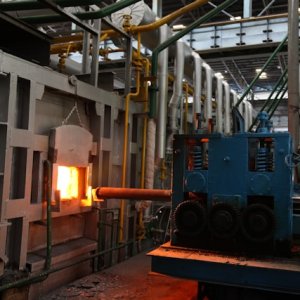
Promoting Inclusion and Diversity in Mexico’s Energy Sector
 By Cas Biekmann | Journalist and Industry Analyst -
Tue, 10/05/2021 - 11:26
By Cas Biekmann | Journalist and Industry Analyst -
Tue, 10/05/2021 - 11:26
The growing importance of environmental, social and governance (ESG) criteria is strongly intertwined with the global energy transition. Inclusion and diversity within energy companies are essential to driving ESG forward, said industry experts involved in Mexican energy associations.
Although a range of intersectional factors such as age, ethnicity and socioeconomic background ought to be considered when fostering diversity and inclusion, much focus tends to go toward the easily visible issue of gender parity. Researchers have particularly zoomed in on inclusion in the positions where it matters most: senior management. In developed economies, women are already frequently outperforming men academically. Studies across the years highlight that companies led partly or entirely by women achieve stellar results. “The value that diversity brings to the Board of Directors, committees, leadership positions and operational roles must be acknowledged. It has been proven that being inclusive generates economic benefits. It is crucial to be able to highlight these benefits so [the energy industry] works to include women in decision-making for the right reasons. There are areas of opportunity in all organizations, from policy design to recruitment, hiring processes and culture,” said María José Treviño, Founding Board Member & Advisory Board Secretary, Women's Energy Network Mexico (WEN).
Despite the advantages that come with gender parity, men continue to outrank women in leadership positions. Leading consulting firm Grant Thornton, which has been keeping score for the past fifteen years, found that the global proportion of senior leadership roles held by women in 2021 stood at 31 percent. Even though there is a long way to go in this regard, the steady increase of this percentage over the years, coming up from 25 percent in 2017, reveals a realistic pathway toward further improvement.
In Mexico, women nevertheless face significant barriers to labor market inclusion. The OECD said that less than half of Mexican women of working age participate in this market. In comparison, 82 percent of men in this age bracket are part of the workforce. Though this could be attributed to Mexico’s status as a developing economy, Grant Thornton underlines that Latin American, African and South-East Asian countries often outperform the global average of women occupying 31 percent of senior leadership positions. Mexico itself performed well in 2020 by reaching 37 percent, for example. By tackling the issue at its root, more progress can be made, experts stressed.
Female participation in Mexico’s energy sector remains unaccounted for, although a quick look at MBN’s energy section does show more male than female faces. Various organizations are promoting gender parity but Veronica Irastorza, Co-founder and Advisor of Voz Experta, told MBN that much work remains to be done. “First of all, we need to realize that there is still no level playing field for women. Many still believe that industry experts are men and do not see the great amount of female talent existing in the sector today. Vox Experta believes that visualization also helps young women see that there is a place for them in the sector,” she said. For this exact reason, Voz Experta aims to promote the visibility of women in the energy sector through participation in events and media.
Patricia Tatto, President, Women in Renewable Energy Mexico (MERM), believes that society should take integral action. “It is necessary to implement specific measures parallel to the integration of the gender perspective to face the current challenges of inequality and inequity, which are still very visible in society,” she said. “This includes measures within companies that work toward achieving gender equality in hiring for important positions. In addition, instruments should guarantee that benefits that support personal development are equally accessible to women and men,” she added. Creating networks such as MERM furthermore helps to achieve a sense of “sisterhood,” but companies, governments, civil society, men and women all need to work together to achieve true change. Like many in the academic and consulting environments, Tatto argues that while access to decision-making is good, access to the board of directors is also a necessity. “We need more women to make decisions in energy,” she concluded.
MERM is active in its mission to bring about the positive change it wants to see in the world. “We are currently working with our community via digital media and are actively connecting women through our platforms, supporting our development through a large network of contacts that unite different specialists. With a newsletter, we empower through relevant content and education on gender and inclusion. Also, by maintaining an updated job bank and with our MERM podcast we seek to bring together new talents in the sector. We remain highly committed to social projects, promoting research and programs that help continue fighting for equity in a masculine sector,” said Tatto. In early 2022, a new project called MERMtorio will be a significant new step for the association.
Treviño is equally active with WEN: “Last year, we established committees and programs that aim to make women visible and to position them in a sector where men are predominant. This last year we have focused, through dedicated committees, on the positioning of our members in panels and magazines to promote content development and knowledge. We also take advantage of social networks to promote our members for the effort and time they dedicate to the industry,” she said. “We also have a job bank where companies that are affiliated with WEN can list their vacancies, providing access to qualified people and a network consisting of more than 4,000 members from other chapters. Within this platform, women have access to events and webinars. This gives us the opportunity to grow in different specialty areas and learn from others. We do all this just to promote inclusion and diversity,” added Treviño.
















